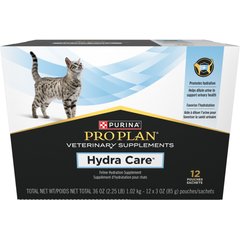Skin Infections in Cats
What Are Skin Infections in Cats?
The skin is the largest organ in a cat’s body, making up a quarter of total body weight. A wide variety of conditions can lead to skin infections, including parasites, allergies, wounds, and other infectious agents. Due to a cat’s thick fur, some cases of skin infection won’t even be visible to a pet parent, while others will.
Some conditions that cause skin infections in cats are dependent on geographic location, lifestyle, gender, and breed of cat. Cats that spend time outdoors have a greater chance of developing a skin infection from conditions like external parasites or injuries. Skin infections can occur anywhere on a cat’s body, but they are found most often on the belly, back, and base of the tail.
Types of Skin Infections in Cats
-
Bacterial skin infections, or pyoderma, commonly caused by Staphylococcus
-
Fungal infections, such as ringworm and yeast infections
-
Allergy infections, especially miliary dermatitis
-
Skin parasites, primarily fleas, mange, and mites
Vet Recommended Health Support
- Feliway Optimum Enhanced Calming 30 Day Diffuser for Cats$29.99Chewy Price
- Purina Pro Plan Veterinary Diets FortiFlora Powder Probiotic Digestive Supplement for Cats, 30 count$30.99Chewy Price
- Purina Pro Plan Veterinary Diets Hydra Care Liver Flavored Liquid Supplement for Cats, 3-oz pouch, case of 12$14.99Chewy Price
- Purina Pro Plan Adult Sensitive Skin & Stomach Lamb & Rice Formula Dry Cat Food, 7-lb bag$28.08Chewy Price
Symptoms of Skin Infections in Cats
- Excessive scratching, licking, and/or chewing of the fur
-
Fur loss
-
Redness or swelling
-
Red bumps and/or scabs
-
Pustules (similar to pimples, with a white head on a raised bump)
-
Scaly or flaky skin
-
Wounds
-
Skin odor
Causes of Skin Infections in Cats
Bacterial Skin Infections
Bacterial infections, or pyoderma, can occur on the surface of the skin, within the layers of the skin, or under the skin of cats. They can affect cats of any age or gender and can be found anywhere on a cat’s body. Staphylococcus pseudintermedius and Pasteurella multocida are bacteria commonly known for causing this condition.
Red skin lesions, such as bumps or pustules, and partial hair loss are the main characteristics of a bacterial skin infection. Cats, like all animals, including humans, have a normal amount of bacteria on the skin. When cats have an itch, wound, or other condition that disturbs and irritates the skin, those bacteria overpopulate and cause a skin infection.
While a bacterial skin infection can happen in any breed, cats with shorter coats, skin folds, and pressure calluses are more prone to these types of infections. Cats are also at a much higher risk of developing a pyoderma when they have other conditions, including:
-
Fungal infection
-
Endocrine disease
-
Allergies to parasites
-
Allergies to food
-
Allergies to the environment
Fungal Infections
Fungal skin infections are commonly picked up when cats come in direct contact with another infected animal or with the spores produced by the fungi. Dermatophytosis, or ringworm, is the most common fungal skin infection in cats. Many fungal infections that affect a cat’s skin also cause issues to the respiratory system. When the infectious spores from the fungus contact the skin or the nails of a cat, they can replicate and cause a noticeable skin disease.
Allergy Infections
Allergic skin disease in cats can be caused by:
-
Food
-
Medication
-
Airborne elements (dust, pollen, and mold are most common)
-
Insects
-
Irritating substances that encounter a cat’s skin
Allergies often cause an intense feeling of itchiness and cats will develop secondary skin infections to these underlying allergies. Flea allergic dermatitis is the most common allergic skin disease in cats. It only takes one microscopic flea egg on an allergic cat’s skin to ignite a full body skin reaction.
Skin Parasites
Parasites that cause skin disease in cats are relatively common. Fleas are most likely the culprit. Cats are also susceptible to several types of mange, including:
-
Canine scabies (Sarcoptic mange)
-
Trombiculosis (Chiggers)
Demodicosis is not considered mange, but it is caused by mites.
How Veterinarians Diagnose Skin Infections in Cats
If you see any abnormality on your cat’s skin, or your cat is showing any signs of itchiness, pain, or discomfort, have them examined by a veterinarian as soon as possible. Diagnosing the underlying cause of skin disease in cats can be difficult, although in some cases, the cause can be easier to determine. A thorough medical history should be taken to include previous medical conditions, a parasite-prevention regimen, and dietary changes.
Your cat’s medical history can provide information about:
-
Potential exposure to things that may cause skin infections (including fleas)
-
Behaviors that may suggest a cause (like scratching, which suggests itchiness)
-
Response to therapy
A physical examination will help your veterinarian determine the pattern of the skin abnormality, such as hair loss, redness, and presence of parasites.
Your veterinarian will use certain diagnostic tools to determine the underlying cause of the infection–to know how best to treat it. If a bacteria or yeast infection is suspected, your vet will do an acetate test, which involves pressing a piece of sticky tape on the skin lesion and then examining the tape under a microscope.
For fungal infections, such as ringworm, your vet will do a culture by pulling a few hairs on and around the skin lesion. A skin scraping is done to look for mites and mange. Blood and urine tests, along with skin biopsies, are done in more severe cases when other forms of diagnosis are unhelpful. Your veterinarian may also evaluate how your cat responds to treatment to diagnose a specific skin problem. More than one visit is often required for an accurate diagnosis.
Treatment of Skin Infections in Cats
In order to treat a skin infection successfully, a proper diagnosis is needed. With some diagnoses, it can take a few days to get lab results. In the meantime, most veterinarians will start treating your cat’s symptoms to alleviate itch or discomfort while they wait for a more specific treatment plan to be made upon a definitive diagnosis.
Treatment for most skin infections involves a combination of oral medications and topical products, such as shampoos, creams, sprays, and mousses. The following are common ingredients in both oral and topical therapy:
-
Antibiotics
-
Oral antibiotics
-
Clavamox (and other Amoxicillin based drugs)
-
-
Injectable antibiotic
-
Convenia
-
-
Topical antibacterial
-
-
Antifungals
-
Oral antifungals
-
Topical antifungals
-
-
Antihistamines
-
Diphenhydramine (Benadryl)
-
Hydroxizine
-
Anti-inflammatories
-
Steroids
-
Antiparasiticides
-
Lime sulfur dip, and some topical and oral flea preventions such as Selemectin and Fluralaner
-
Dietary changes will most likely need to be made if your vet suspects a food allergy.
Flea infestations should be eliminated by treating the cat and all other pets in the home, in addition to the indoor and outdoor environment. As with any treatment plan, it is critical that you read and understand all directions for using the prescribed flea-removal product. In many cases of skin infection in cats, the cause may be transmissible to other cats (and, in some cases, to people), so preventing transmission to other animals or humans is important to a successful treatment.
Recovery and Management of Skin Infections in Cats
Depending on the underlying cause and severity of the skin infection, the prognosis is often favorable. Infections that come from an underlying systemic disease, however, may have a more guarded prognosis.
For most skin infections, oral medications will need to be given for at least 2 weeks but often longer, depending on the diagnosis. A common reason for treatment failure is the pet parent missing doses or not completing the full course of medication prescribed. Topical therapies, including parasite preventatives, should be used for the rest of the cat’s life.
All medications should be completed even if your cat’s skin already looks better–this ensures the recovery is complete. Routine bathing of the cat’s wounds in benzoyl peroxide or other medicated shampoos can reduce the infection and will help after to prevent recurrence.
Featured Image: iStock.com/sony_moon




